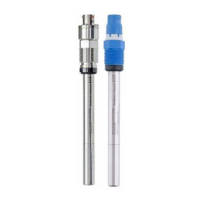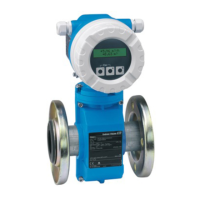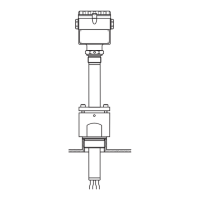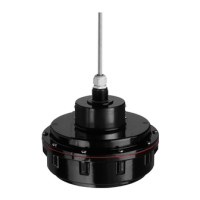5 Commissioning OxyMax W COS 41
16 Endress+Hauser
5.3 Calibration
Calibration is a means of adapting the transmitter to the characteristic values of the sen-
sor. As no zero calibration is required for the sensor COS 41, a single-point calibration
is carried out in the presence of oxygen.
There are three basic types of calibration:
• In air (preferably saturated water vapour, e.g. near the water surface)
• In air-saturated water
• By entering a reference measured value in the transmitter
(sensor remains in the medium).
Following only the calibration in air is discribed because it is the easiest and that’s why
the recommended method of calibration.
Calibration in air is only possible if air temperature
≥ – 5 °C.
The sensor requires calibration after:
• first commissioning
• replacing a membrane or electrolyte
• cleaning the gold cathode
• long breaks in operation without power supply
• typical time intervals dependent on operating experience
5.3.1 Calibration in air
To calibrate the sensor in air, proceed as follows:
• Remove the sensor from the medium.
• Clean the outside of the sensor with a damp cloth. Then dry the sensor membrane e.g.
by using a tissue.
• If the sensor is removed from a closed pressure system with a process pressure great-
er than atmospheric pressure:
– open the membrane cap to equilibrate the pressure and clean the cap if necessary.
– Change the electrolyte filling and close the membrane cap again.
– Wait for the polarisation time to end.
• Then wait while the sensor adjusts to the temperature of the ambient air. This takes
about 20 minutes. Check that the sensor is not in direct sunlight during this time.
• If the measured value display on the transmitter is stable, carry out the calibration in
accordance with the Operating Instructions of the transmitter.
• Place the sensor in the medium again.
!
Note!
Make sure you comply with the instructions for calibration in the Operating Instructions
of the transmitter.
5.3.2 Calculation example for the calibration value
As a check, you can calculate the expected calibration value (transmitter display) as
shown in the following example.
Salinity is 0.
1. Determine:
• The sensor temperature (ambient air)
• The altitude above sea level.
• The current air pressure (rel. air pressure to sea level) at the time of calibration.
(If undeterminable, use 1013 hPa for an approximate calculation.)
2. Define:
• The saturation value S acc. to Table 1 on page 17
• The factor K acc. to Table 2 on page 17

